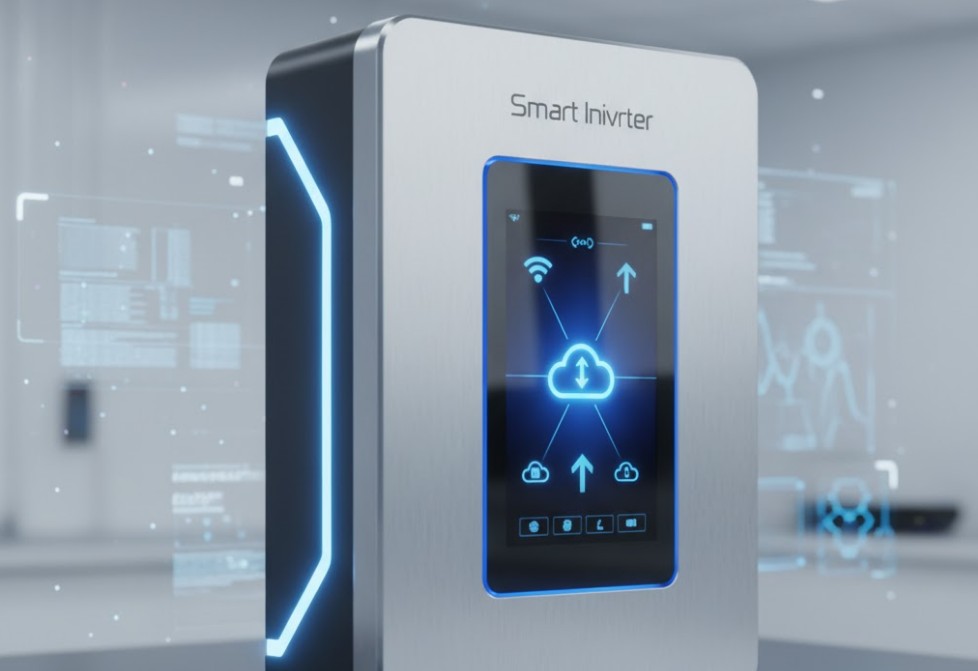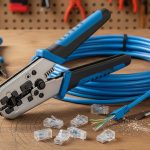In the world of renewable energy, solar panels capture the spotlight—they are the visible technology turning sunlight into power. Yet, the real workhorse, the component that makes solar electricity usable in your home, often goes unnoticed. This critical piece of equipment is the solar inverter. Without it, the electricity generated by your rooftop panels would be useless for running your refrigerator, charging your laptop, or powering your lights.
Therefore, to truly understand a solar energy system, you must first answer the fundamental question: What is a solar inverter? In short, it is the brain and muscle of the entire system, converting the raw energy from the panels into the sophisticated power required by modern electrical grids and household appliances. This comprehensive article will dive deep into the function, types, and importance of the solar inverter, ensuring you grasp why this single component is perhaps the most essential part of your journey toward energy independence.
The Essential Function: DC to AC Conversion
The primary, non-negotiable job of a solar inverter is power conversion. This is necessary because of the fundamental difference between the electricity generated by the panels and the electricity used by virtually all modern homes and the utility grid.
Understanding Direct Current (DC)
Solar photovoltaic (PV) panels generate Direct Current (DC) electricity. In DC, the electrical charge flows in only one direction. This is the same type of power found in car batteries, cell phones, and flashlights. DC is great for storage, but it is highly inefficient for long-distance transmission and is not the standard power format for residential homes.
Understanding Alternating Current (AC)
Your home and the main utility grid run on Alternating Current (AC) electricity. In AC, the electrical charge periodically reverses direction. This type of power is essential because it can be easily stepped up or down in voltage via transformers, making it highly efficient for sending electricity across vast distances. Every appliance you plug into a standard wall socket—from your TV to your microwave—requires AC power.
Consequently, the solar inverter acts as the electronic bridge, taking the raw, unstable DC power from the panels and using sophisticated circuitry—involving components like transistors and capacitors—to simulate the smooth sine wave required for AC power. This conversion must be precise, matching the voltage and frequency (usually 120V/240V and 60 Hz in North America) of the utility grid to ensure safe and reliable operation.
The Three Main Types of Solar Inverters
As solar technology has advanced, so too have the different methodologies for converting DC power. Today, the choice of solar inverter architecture is one of the most critical decisions in designing a system, influencing efficiency, monitoring capabilities, and cost.
1. String Inverters (Central Inverters)
The string inverter is the traditional workhorse of the industry. In this configuration, multiple solar panels are wired together in a series—known as a “string”—to build up a high DC voltage. All strings then feed their power to a single, centrally located string inverter, typically mounted on a garage wall or near the main electrical panel.
- Pros: They are generally the most affordable inverter type, robust, and relatively easy to install and maintain as they are centrally located.
- Cons: A major drawback is the ‘Single Point of Failure’. If one panel in a string is shaded (e.g., by a chimney or tree branch) or dirty, the entire string’s production drops to the level of the lowest-producing panel. Also, roof-level monitoring is not possible, as monitoring happens at the string level.
2. Microinverters
The microinverter revolutionized solar efficiency. Instead of pooling DC power, a microinverter is installed directly underneath or very close to every single solar panel. This means that the DC-to-AC conversion happens immediately at the panel level.
- Pros: Panel-level optimization is the key benefit. If one panel is shaded, only that panel’s output is affected; all other panels continue producing at their maximum potential. This is often necessary for roofs with complex shading issues. They also offer panel-level monitoring, making troubleshooting easier.
- Cons: They are more expensive per unit and their installation requires more wiring on the roof, which can complicate maintenance.
3. Power Optimizers (Hybrid Systems)
A power optimizer system represents a middle ground between string and microinverters. Like a microinverter, a small optimizer box is attached to each solar panel. However, this box does not convert DC to AC. Instead, it performs the crucial task of Maximum Power Point Tracking (MPPT) at the panel level, optimizing the panel’s DC voltage before sending it back down to a central string inverter for the final DC-to-AC conversion.
- Pros: They provide the panel-level optimization benefits (mitigating shading effects) and panel-level monitoring, but the bulk of the power electronics (the main inverter) remains in a single, accessible location. This provides a balance of cost, safety, and performance.
- Cons: They add complexity compared to a simple string setup, involving two devices per panel (the optimizer and the central inverter) rather than just one.
Beyond Conversion: The Solar Inverter’s Additional Functions
While conversion is the solar inverter’s defining task, modern units perform numerous other functions that are critical for safety, efficiency, and system longevity. Transition words like ‘furthermore’ and ‘in addition’ highlight these extra capabilities.
Maximum Power Point Tracking (MPPT)
The output of a solar panel constantly changes based on temperature, light intensity, and cloud cover. The Maximum Power Point Tracking (MPPT) circuit within the solar inverter (or power optimizer) continuously adjusts the electrical load resistance felt by the solar array. This ensures the array is operating at the precise voltage and current combination that generates the maximum possible power (Maximum Power Point) at any given moment. Without MPPT, systems would operate at dramatically reduced efficiency, especially under sub-optimal conditions.
Grid Synchronization and Anti-Islanding
For grid-tied solar systems, the inverter must be synchronized with the utility grid’s voltage and frequency. This is non-trivial, as the grid frequency slightly fluctuates. Furthermore, a crucial safety feature called Anti-Islanding is built into all grid-tied inverters. If the utility grid goes down (a power outage), the inverter must immediately detect this and shut itself off (disconnect from the grid). This prevents the solar system from sending power into dead utility lines—a phenomenon known as backfeeding—which poses a lethal risk to utility workers attempting repairs.
To better understand the different solar configurations, read more on grid-tied solar vs off-grid solar systems.
Monitoring and Data Logging
Most modern solar inverters include sophisticated monitoring software, often accessible via a smartphone app or web portal. This technology allows homeowners to track daily, monthly, and lifetime power production, identify potential faults, and visualize their energy savings. This level of transparency is invaluable for optimizing consumption and maintenance.
Considering Off-Grid and Hybrid Inverters
Not all solar systems are designed to be connected to the public utility grid. Off-grid systems and systems incorporating battery storage have unique needs that require specialized inverters.
Off-Grid and Hybrid Inverters
An off-grid inverter must be capable of creating its own AC grid (a ‘mini-grid’) inside the home, as there is no utility grid reference. It often includes an integrated battery charger to manage power flow into and out of the battery bank. Unlike grid-tied inverters, off-grid inverters must also handle load demand without relying on the unlimited power potential of the utility grid. Hybrid inverters are the most versatile, capable of handling all scenarios: feeding power into the grid, charging batteries, and powering the home directly during an outage.
Many solar generators—portable power stations that integrate solar panels, an MPPT charge controller, a battery, and an inverter—use these specialized off-grid inverters. These units are highly effective for mobile power needs.
For more details on portable battery solutions, you can explore the best solar generators for home backup, the best solar generators for off-grid living, and options for best solar generators for RV camping.
The Role of Battery Management
In a hybrid or off-grid system, the solar inverter (or often a separate charge controller working in tandem) dictates how the DC power is split. Some power goes directly to the inverter for immediate AC conversion, while the rest is routed to charge the batteries. Managing the battery’s state of charge (SOC), preventing overcharging, and regulating discharge rates are all integrated functions that protect the battery’s lifespan, which is a significant investment.
The Future of Solar Inverters: Smart Technology and Resilience
The evolution of the solar inverter continues at a rapid pace, pushing towards greater intelligence and resilience, which is increasingly important as extreme weather events become more common.
Smart Inverters and Grid Services
Modern solar inverters are often referred to as ‘Smart Inverters’ because they can communicate bi-directionally with the utility grid and actively assist in stabilizing it. They can manage reactive power (VARs), regulate voltage, and respond to frequency shifts, helping the grid integrate larger amounts of intermittent renewable energy more effectively. This shift moves the inverter from a simple power converter to an active grid asset.
Compliance and Safety Standards
Safety is continuously being enhanced. The introduction of standards like NEC 2017/2020 mandates Rapid Shutdown capabilities. This feature requires the solar inverter to quickly de-energize conductors on the roof when a safety switch is activated (such as by firefighters). This is easier to achieve with microinverters and power optimizers, which manage voltage at the panel level, than with traditional string inverters.

Final Thoughts on What Is A Solar Inverter?
The solar inverter is undeniably the most critical, yet least understood, component of any solar photovoltaic system. It is the sophisticated gatekeeper that transforms raw, unusable DC electricity into the smooth, safe, and reliable AC power that runs our modern world. Understanding what is a solar inverter goes beyond basic curiosity; it empowers homeowners to choose the right architecture—be it a centralized string inverter, a performance-focused microinverter, or a balanced system using power optimizers—that best suits their unique rooftop, budget, and energy goals. As we continue to move toward a more sustainable and electrified future, the inverter’s role will only grow, evolving into a true ‘smart’ device that manages not only your home’s energy but actively participates in stabilizing the entire electrical grid. Therefore, when evaluating a solar installation, remember that while the panels capture the sun, it is the inverter that truly turns that captured light into usable, resilient power.
Amranul is a highly experienced product review writer with a passion for helping readers make smart, informed purchasing decisions. Since 2018, he has specialized in thoroughly researching and analyzing a wide range of products to deliver honest, in-depth reviews. Amranul combines technical accuracy with clear, engaging writing to break down complex product features and highlight true user value. Look for his reviews to find reliable information and expert insights you can trust before you buy!





